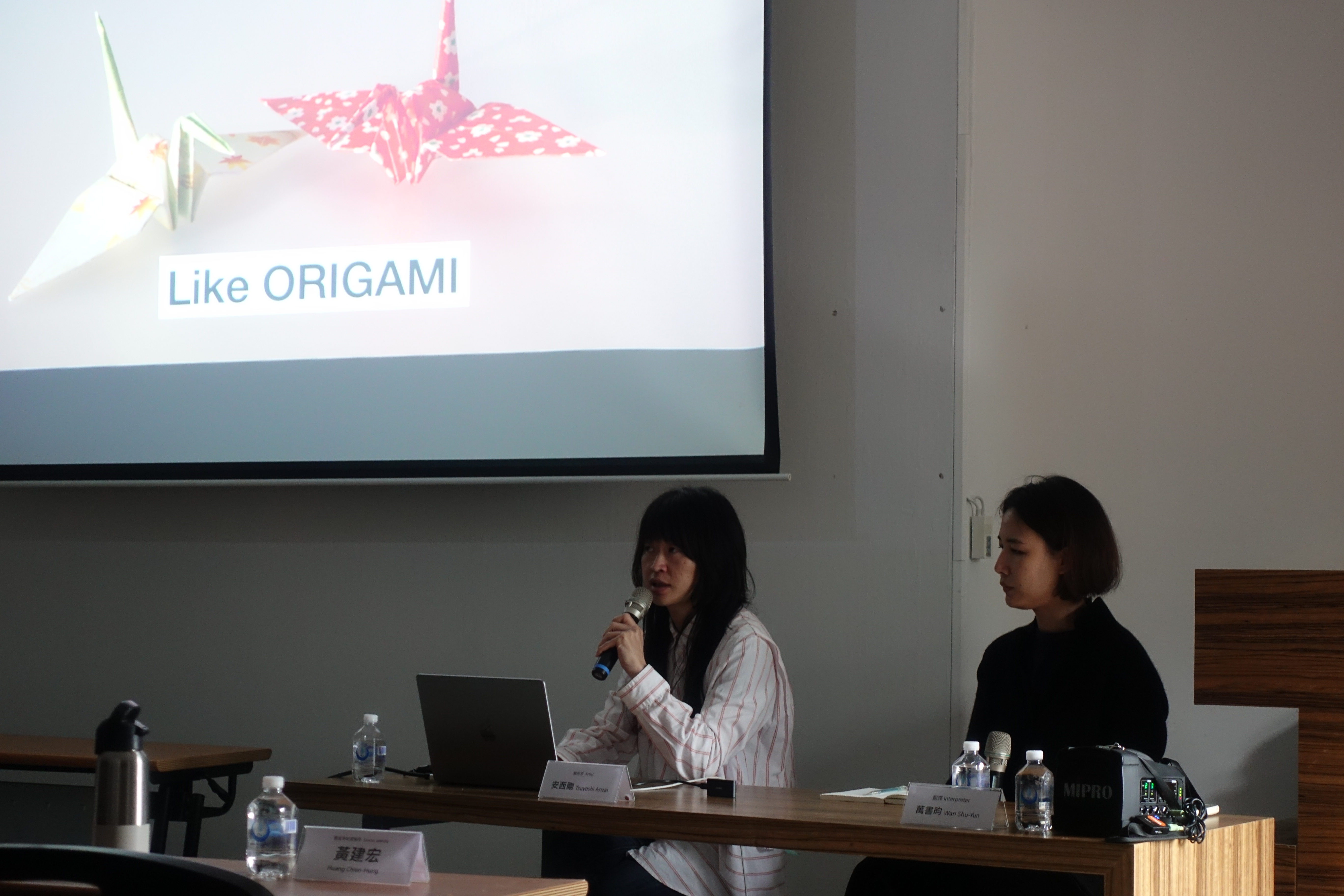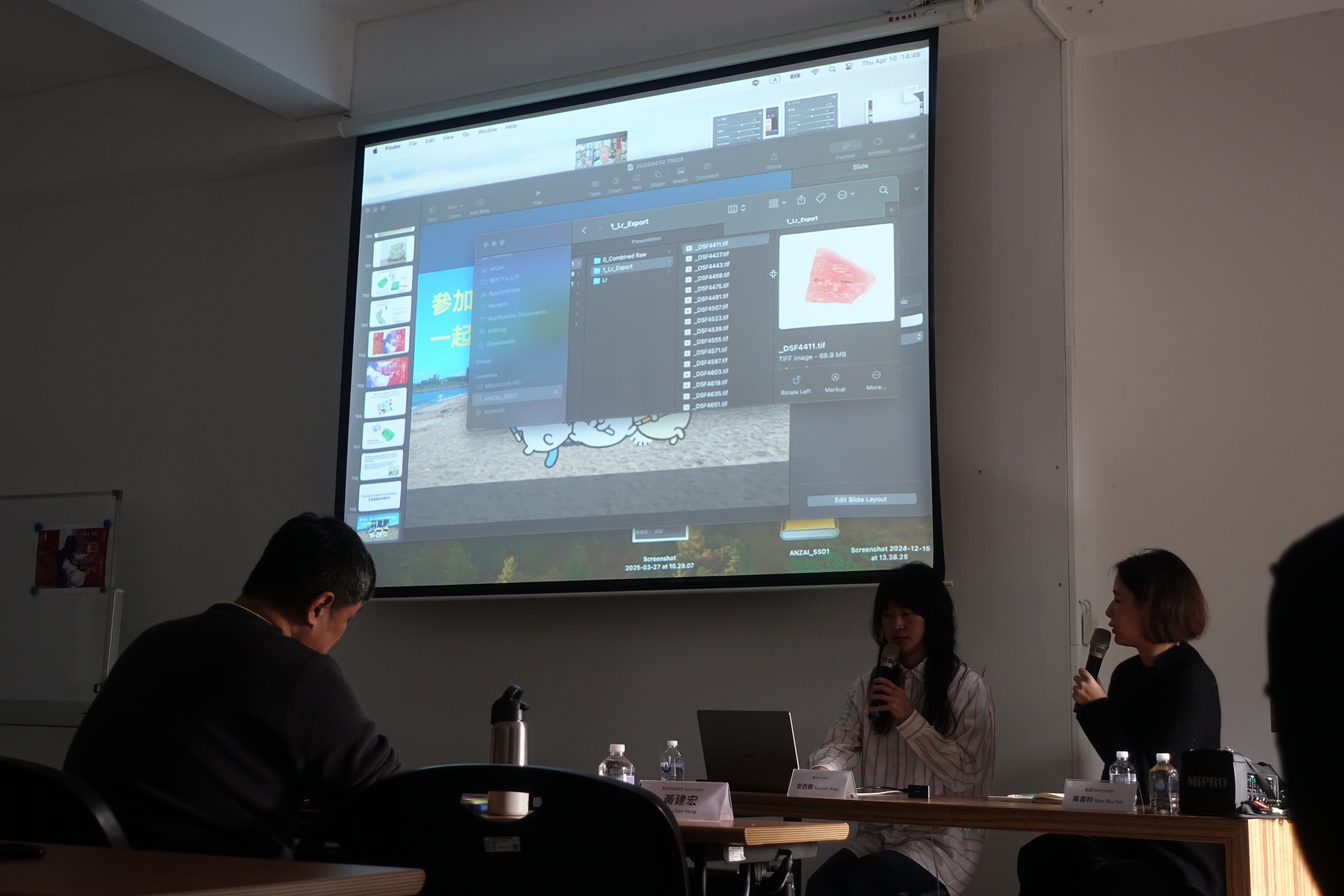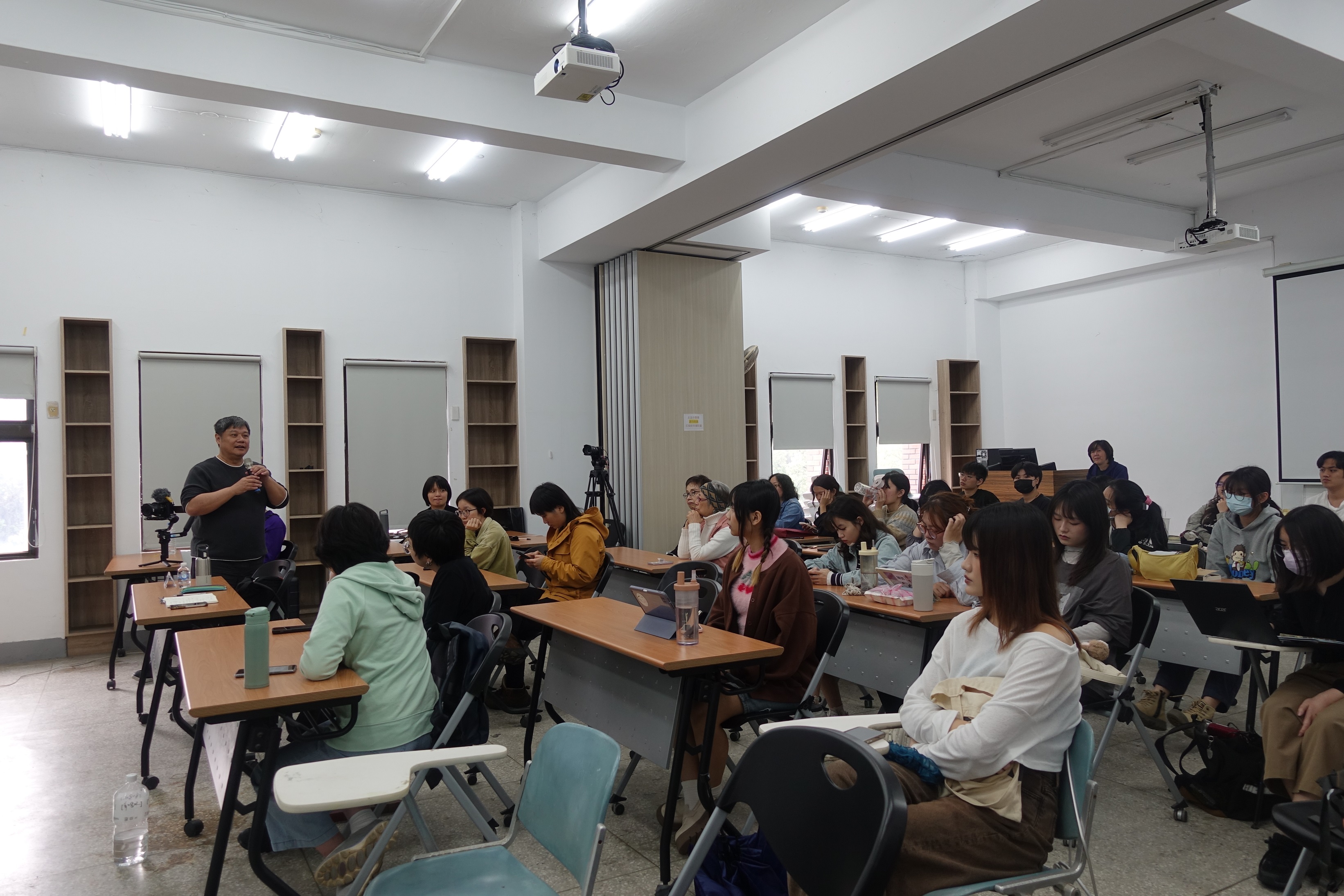2025.07.23
April 10th, 2025 TEA+ Residency Exchange Program — Tsuyoshi Anzai Artist Talk
Date|Thursday, April 10, 2025, 13:30–15:30
Venue|Room F201, School of Fine Arts, Taipei National University of the Arts (TNUA)
Artist|Tsuyoshi Anzai (b. 1987)
Moderator|Huang Chien-Hung (Director, Kuandu Museum of Fine Arts)
Interpreter|Wan Shu-Yun
Documentation|Tsai Yu-Fan
Director Huang Chien-Hung began by noting, “Tsuyoshi Anzai is the first artist to come to Taiwan through the TEA+ Residency Exchange Program. In recent years, his work has turned toward examining the impact of marine microplastics on human society. During this residency, he will further collect and study microplastics specific to Taiwan.”
Introducing himself, Anzai said, “I was born in Tokyo and raised in Saitama, just outside the city.” He then proceeded to speak about his early works.
Anzai remarked, “Every time I press the On or Off switch, I experience both anticipation and uncertainty. These unpredictable objects thus come into being as my sculptural works.” In his 2021 work Unsettled, he assembled ordinary objects and attached motors, turning these familiar components into living beings that moved autonomously within the exhibition space. Anzai believes that “sculpture is an event, and an event is a sculpture. Just like this water bottle on the table—will it still exist in the same form a hundred million years from now? No one can say for sure.”
In a 2013 exhibition in Korea, Anzai invited the audience to repair broken works by following the instructions written on sticky notes placed on-site. “Eventually, my sculptures became something entirely beyond my control,” he said. In a 2014 solo exhibition in Budapest, he simultaneously displayed works he created alongside works made by the audience following his instructions. “Both sets of objects represent an encounter with the self—a kind of ‘doppelgänger’—transcending the binary opposition between original and replica.”
In addition, he emphasized that “the core of my kinetic sculptures lies in the method of making. Like ‘origami,’ the process of folding is itself the essence of the final sculptural form.” Anzai further explained, “My sculptures seek to liberate objects from their original contexts and meanings, inviting viewers to encounter them simply as objects.”
For instance, in his 2013 video installation Somewhere in the Ballpark, the setting is a post-apocalyptic future in which two men unearth everyday items from our time and speculate about their uses. In Coccyx’s Identity Crisis (2017), Anzai packaged replicas of the human coccyx as products “in an attempt to endow objects with new existential meanings.” His 2019 work Artifact involved collecting plastic fragments from the beach and mimicking the approach of a future archaeologist, restoring and assembling the pieces.
“Another way to detach objects from their original meanings,” he added, “is by altering their scale.” In his ongoing project Fatigue (2021–), he collects packaging scraps and re-illustrates them as enlarged drawings from the perspective of an ant. Similarly, his current project Giant Micro Plastic (2024) continues this trajectory. Anzai noted, “Next week, I will hold a Giant Micro Plastic workshop at the university. I invite everyone to bring plastic waste from their daily lives so we can use it to fill cushion bags.”
To conclude, Anzai demonstrated the process of collecting, creating, and assembling images of microplastics, commenting, “Microplastics are a kind of presence that frees humanity from the desire to control everything.” He added, “By enlarging the scale of microplastics, we uncover the previously invisible and reveal their multifaceted process.”
During the Q&A session, Director Huang summarized, “Anzai’s work offers a continuation of life for inorganic materials.” The attendees then raised several questions: “How does Anzai observe the diversity and differences in everyday objects between Taiwan and Japan?” and “How do your artworks disrupt the relationship between viewer and object in an exhibition context?”
Anzai responded, “During a 2019 residency at Treasure Hill Artist Village, I encountered objects in Taiwan that would be difficult to find in Japan. Likewise, in a workshop in Budapest, participants brought items with distinctly Eastern European characteristics.”
Regarding the relationship between the artworks and the audience, he emphasized, “Breaking boundaries is crucial. First, I believe the audience is also part of what is being observed in an exhibition. Second, because my kinetic sculptures are designed to move toward the viewer, they inherently highlight the institutional boundaries that museums establish around observation.”
Finally, an attendee asked, “How do you choose which microplastics to replicate or enlarge?” Anzai replied, “There is no strict standard, but I do have a sense of priority. I tend to select objects with rough textures or unusual shapes.”
------------------------------------------------------------------------------------------------------------------------------------------------------------------------
1 For more details on the event, please see the Kuandu Museum of Fine Arts website. https://kdmofa.tnua.edu.tw/mod/course/index.php?REQUEST_ID=e82ed5fc895d26c647025690a5eb7e39d465d0997280f5a77b81910a8523f119&pn=0. Accessed 20 June 2025.



Profile

Tsuyoshi Anzai
Tsuyoshi Anzai is a Japanese contemporary artist based in Chiba. He explores the interplay between human and non-human perspectives by working with ready-made plastic objects, including everyday items and waste. His work removes the original functions and meanings of these artificial objects, prompting viewers to reconsider their relationship with the material world. Anzai's kinetic sculptures, crafted from everyday items, move in unexpected ways, challenging the boundary between animate and inanimate. He also creates sculptures from plastic debris collected on beaches, imagining them as relics studied by non-human archaeologists in a distant future. His work has been exhibited at the Ludwig Museum (Budapest), 21st Century Museum of Contemporary Art (Kanazawa), Museum of Fine Arts, Houston, and Künstlerhaus Bethanien (Berlin).
- Participants
- Tsuyoshi Anzai
- Date
- 2025.07.23